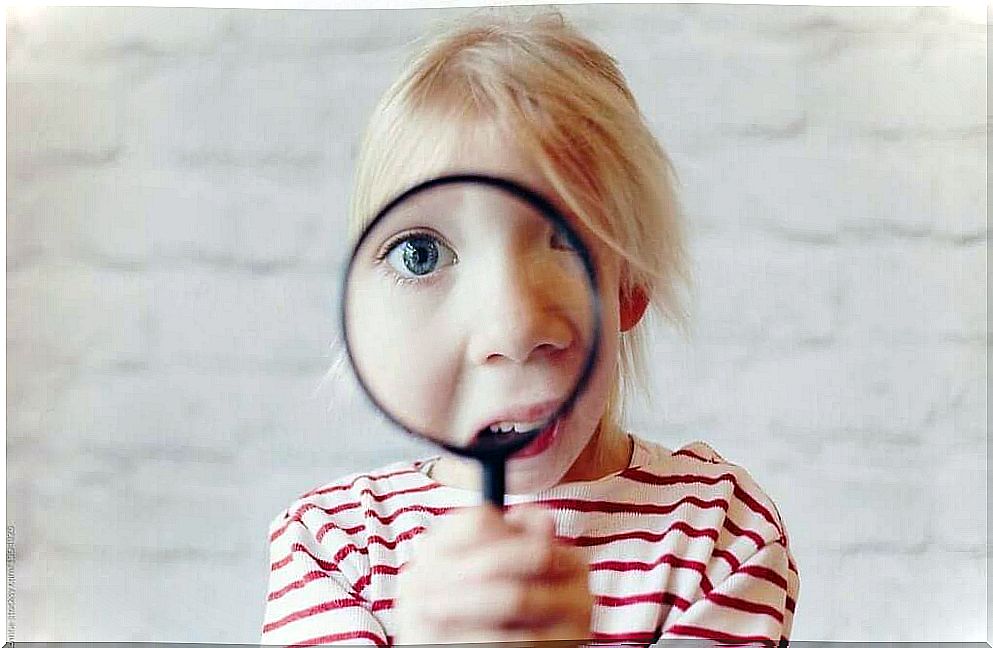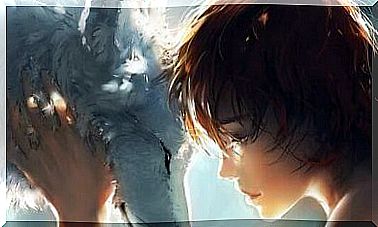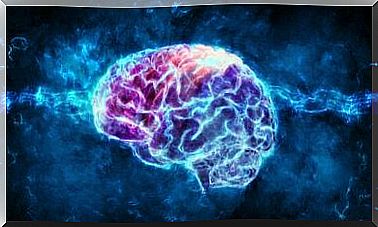How Does The Curiosity Principle Work In The Human Mind?

The principle of curiosity is deeply rooted in the brain. It is true that it also appears in many animals, but in humans this instinct is much more powerful and sophisticated. This is due to our natural selection, as this mechanism allows us to find new resources to adapt to any circumstance and successfully exit it.
Writer Dorothy Parker said that boredom is cured by curiosity, but curiosity is not cured by anything. That this is so is little more than a blessing and a necessity. Somehow, the person who ceases to feel interested in learning and to ask the reason, why and the origin of his surroundings fades a little more each day.
The absence of curiosity weakens the brain and takes away our impetus, energy, creativity… If people have an almost inherent desire to solve the uncertainties, mysteries and inconsistencies of everyday life, it is because these processes generate investigation and learning. That mark on our genomes made it easier for us to be where we are now.
The human brain is driven by a sense of curiosity and this is what facilitates knowledge, motivation and even survival. Because while they continue to sell us the idea that curiosity killed the cat, what no one tells us is that it actually made him wiser…

What is the principle of curiosity in the human mind?
Curiosity is a basic element of our cognition. However, the truth is that we continue to have many doubts about its neuronal mechanisms and even about its biological function. Research around this dimension has started very recently. All of them arose in an attempt to understand the usefulness of this mechanism and the individual differences.
Of note is the work of Dr. Todd Kashdan, from the University of Florida, who in 2004 developed a scale to explore curious behaviors. Something that catches our attention is this: people spend more time letting themselves be guided by the principle of curiosity than eating.
Let’s think for a moment to understand this better. Simple things like reading books, listening to music, watching a movie, checking out our social networks or even chatting with the family are guided by curious behavior. We completely forget a dimension that, in a way, guides much of our behavior.
Let us, therefore, delve a little deeper into the bases of the principle of curiosity.
Curiosity is a basic component of our nature
A survey conducted at the Department of Brain and Cognitive Sciences at the University of Rochester indicated something important. Curiosity is one of the most important human impulses and, to this day, we haven’t given it enough importance. It promotes science, the world economy, facilitates learning and even our personal development.
William James, one of the most prominent psychologists in our history, defined the principle of curiosity as the drive toward better cognition. In other words, this dimension defines the desire to know what we don’t know. It is the highest way to develop our intelligence and also the values that children should cultivate.
Principle of curiosity and humor
The curiosity principle also tells us that this dimension can decrease at certain times. Psychological disorders, such as depression, diminish our curiosity, as well as age-related cognitive decline or neurodegenerative diseases.
Likewise, neuroscience tells us that simply experiencing the sting of curiosity is an invigorating stimulus for the brain. This dimension encourages learning, understanding of things and knowledge. However, we only experience something like this when we are emotionally well.
Pleasure and stress tolerance
This data is interesting and also shows something we all feel on countless occasions. Curiosity makes us learn to tolerate stress and anxiety. We achieve this by understanding that our reality is inhabited by uncertainties, and this is something common. We know that, in our daily life, not everything follows a pattern or is predictable.
However, these dimensions, far from blocking us, encourage us to face them, to resolve them and to work to understand them and even transform them. All of this, ultimately, facilitated our advancement and survival.

Being curious as a way to develop our brain
If there is one aspect where it would benefit us to go back to childhood, it is precisely in relation to curiosity. This dimension, which somehow fades or weakens over the years, is one of the characteristics that best defines most children.
They are the ones who show a greater interest in situations marked by uncertainty. They love, for example, to manipulate objects whose underlying mechanisms they don’t understand. While we take many things for granted, they wonder and wonder why what they see cannot be any different.
His lateral thinking challenges our most logical and normative approach. Furthermore, children demonstrate social curiosity and perceptive curiosity, that is, they are intrigued by almost all stimuli and also by the way our society is formed and how we relate to each other. In their minds, there is an omnipresent component that is also part of the curiosity principle: fascination.









